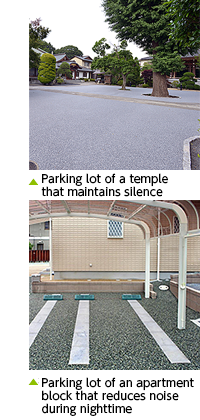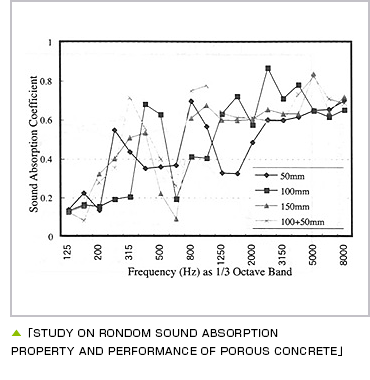Sound absorption
Sound absorption
Noise issues in urban environments are reduced through exceptional sound absorption
 As porous concrete has a porous structure, it can absorb and cancel out noise.
As porous concrete has a porous structure, it can absorb and cancel out noise.
An environmental problem within urban areas is neighborhood noise. Today, with the demand for quieter environments growing, solving neighborhood noise to create better urban environments has become an issue of high importance.
Using porous concrete in the flooring and walls of buildings and on-road surfaces, noises from road surfaces, indoor air-conditioning and ventilation systems, garages, or store parking, lots can be expected to be absorbed and reduced. Porous concrete makes possible the reduction of environmental noise in urban spaces.
The sound-absorbing properties of multilayered porous concrete
Measuring the effects of sound absorption in a reverberation room
 As porous concrete is porous (it has internal air gaps), it can absorb noise. By using porous concrete blocks to build flooring and walls, they can be expected to absorb sound.
As porous concrete is porous (it has internal air gaps), it can absorb noise. By using porous concrete blocks to build flooring and walls, they can be expected to absorb sound.
Through experiments, it has been confirmed that noises between 500 and 2,000 Hz are reduced by around 30 to 50%.
| Type | Wall thickness |
|---|---|
| Porous concrete | 5 to 13 mm |
